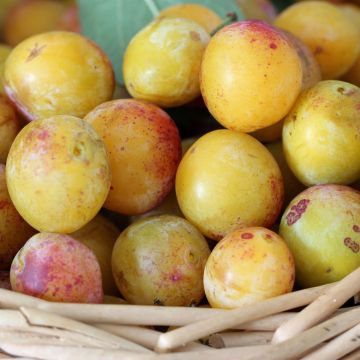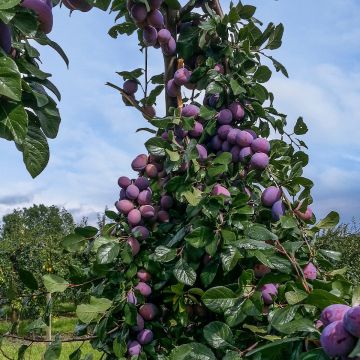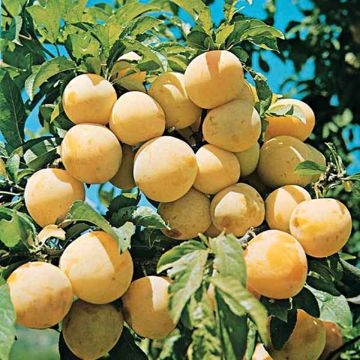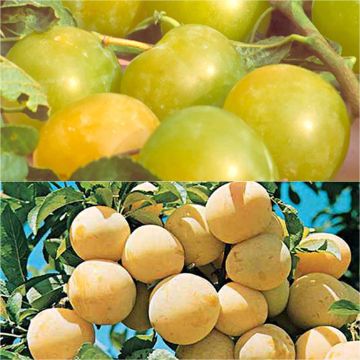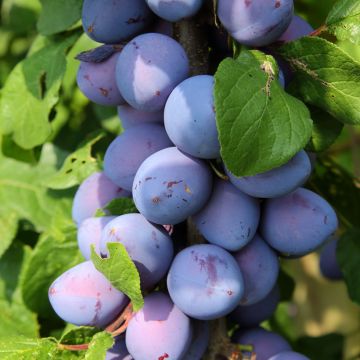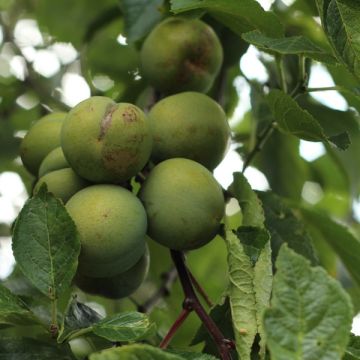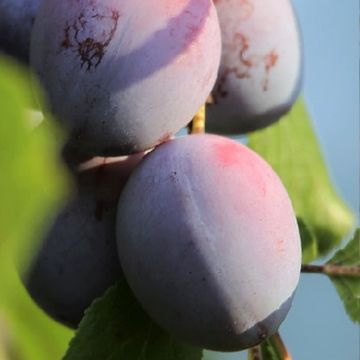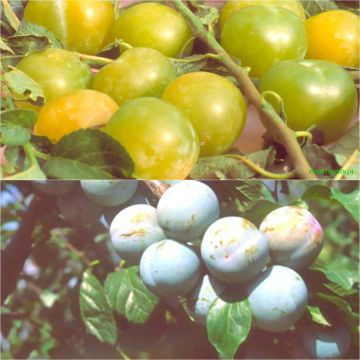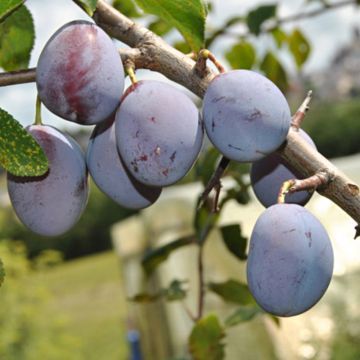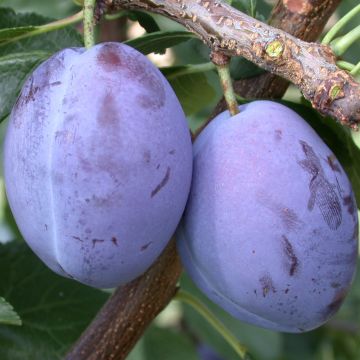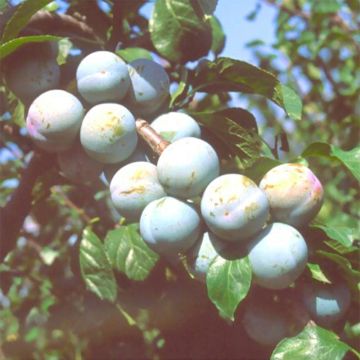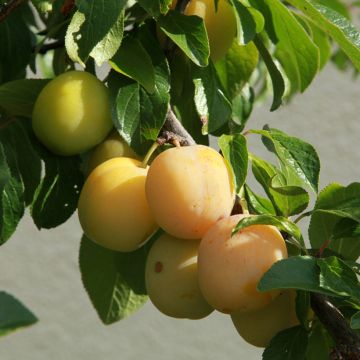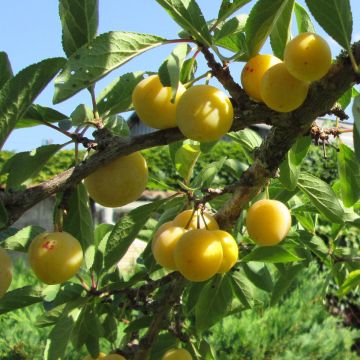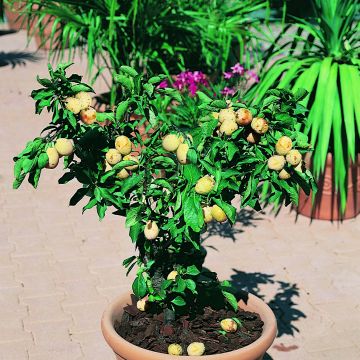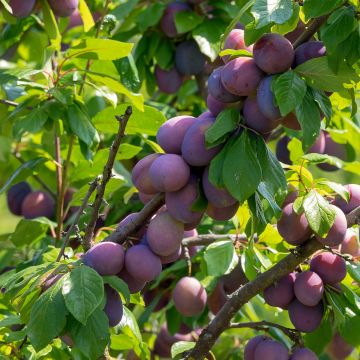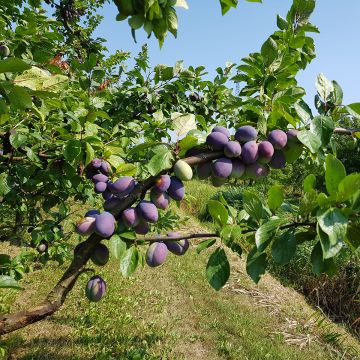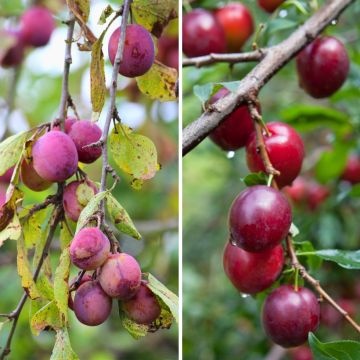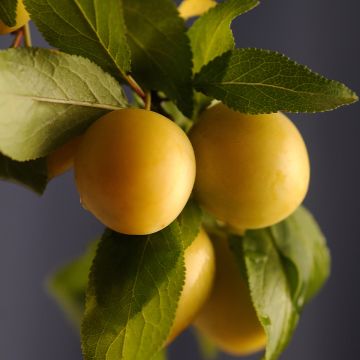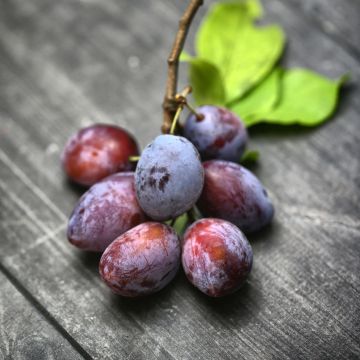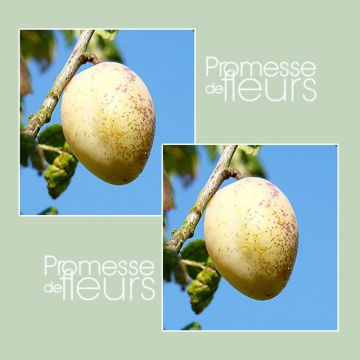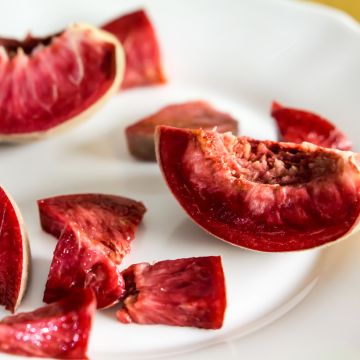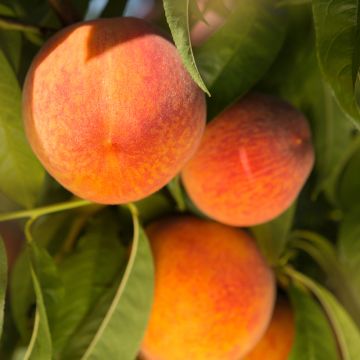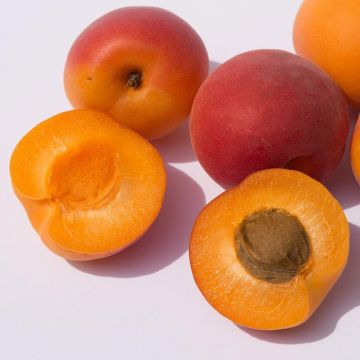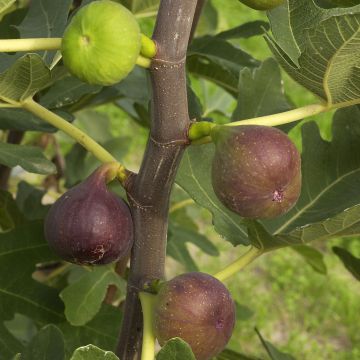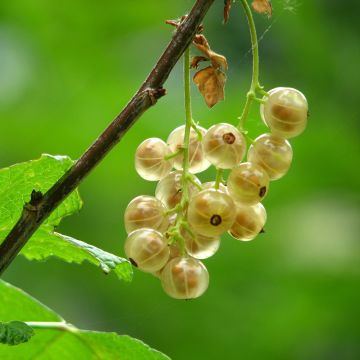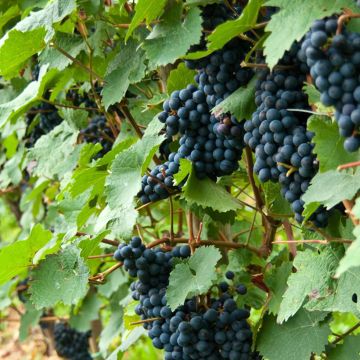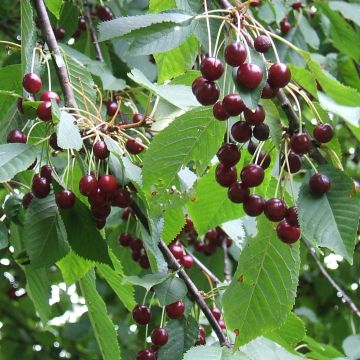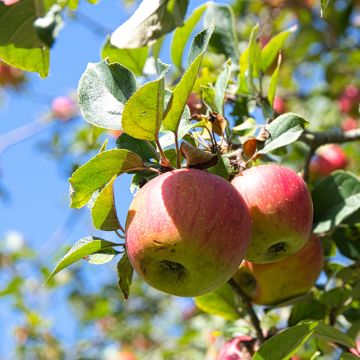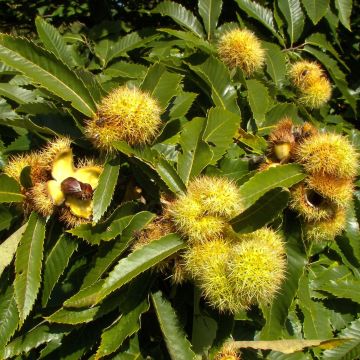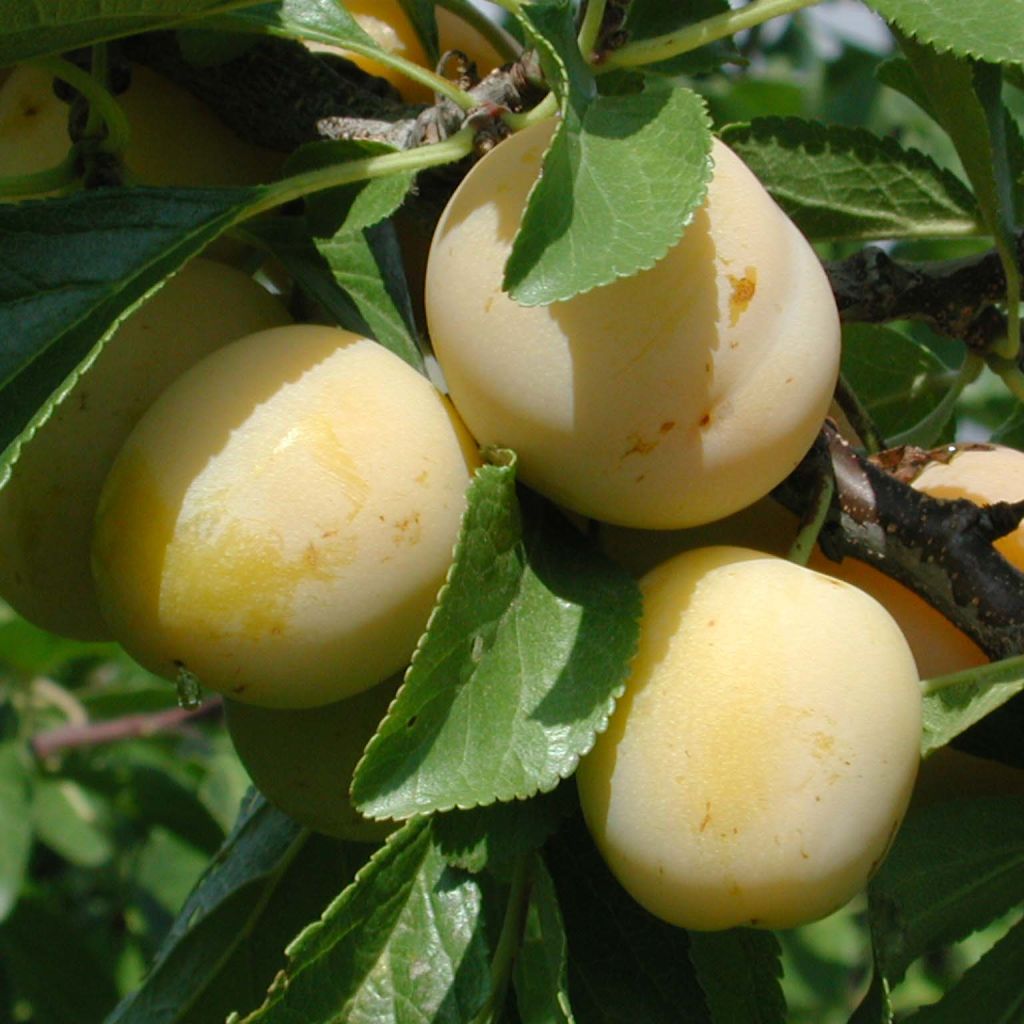

Prunus domestica Miraclaude - Common plum
Prunus domestica Miraclaude - Common plum
Prunus domestica Miraclaude® 'Delclomi'
European plum, Common plum, Garden plum
Why not try an alternative variety in stock?
View all →This plant carries a 6 months recovery warranty
More information
We guarantee the quality of our plants for a full growing cycle, and will replace at our expense any plant that fails to recover under normal climatic and planting conditions.
From €5.90 for pickup delivery and €6.90 for home delivery
Express home delivery from €8.90.
Delivery to Corse prohibited: UE law prohibits the import of this plant from mainland France to Corse as part of the fight against Xylella fastidiosa. Please accept our sincere apologies.
More information
Description
The 'Miraclaude' Plum Tree is an interesting variety for several reasons. It is a recent creation, self-fertile and highly productive, with fruits that combine the appearance and taste qualities of two highly appreciated fruits: the 'Mirabelle' and the 'Reine Claude'. Round, yellow in colour and covered with a light bloom, these fruits have a melting texture and a remarkable flavour. The harvest takes place in July.
The original area of plum trees is said to be Syria, not China. During the time of Roman hegemony over the region, various local fruits including plums were introduced to Rome. This fruit tree naturally grows up to 7 metres (23 feet) tall when fully grown. Its free and upright habit is appreciated, and when pruned properly, it will be easy to harvest. It thrives in full sun or partial shade and grows in all types of rich, moist, deep, and even heavy soil, but without limestone.
Its leaves are oval, almost oblong, serrated-toothed, and slightly pubescent. The flowering of the 'Miraclaude' Plum Tree occurs in March-April. The tree is then covered with white flowers that appear on the previous year's branches. They are self-fertile. This variety is a very good pollinator.
Plums are consumed raw at the base of the tree, in fruit salads, but also in desserts, pastries, as accompaniments to meats and dishes. They are transformed into jams, of course, but also into fruit in syrup, compotes. They are also used to make brandy.
This fruit tree is delivered in a "ready-to-plant" root ball. During planting, the root ball must be planted as it is. The biodegradable wrap surrounding the root ball, which preserves the rootlets, will decompose naturally during the plant's growth. By doing so, you ensure better establishment.
Report an error about the product description
Prunus domestica Miraclaude - Common plum in pictures
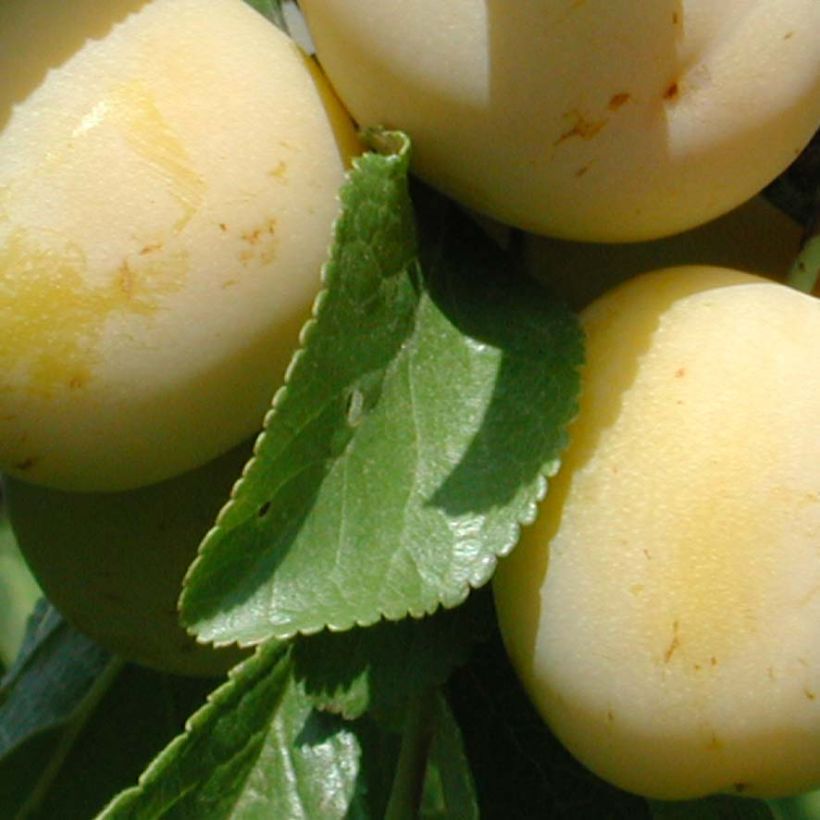

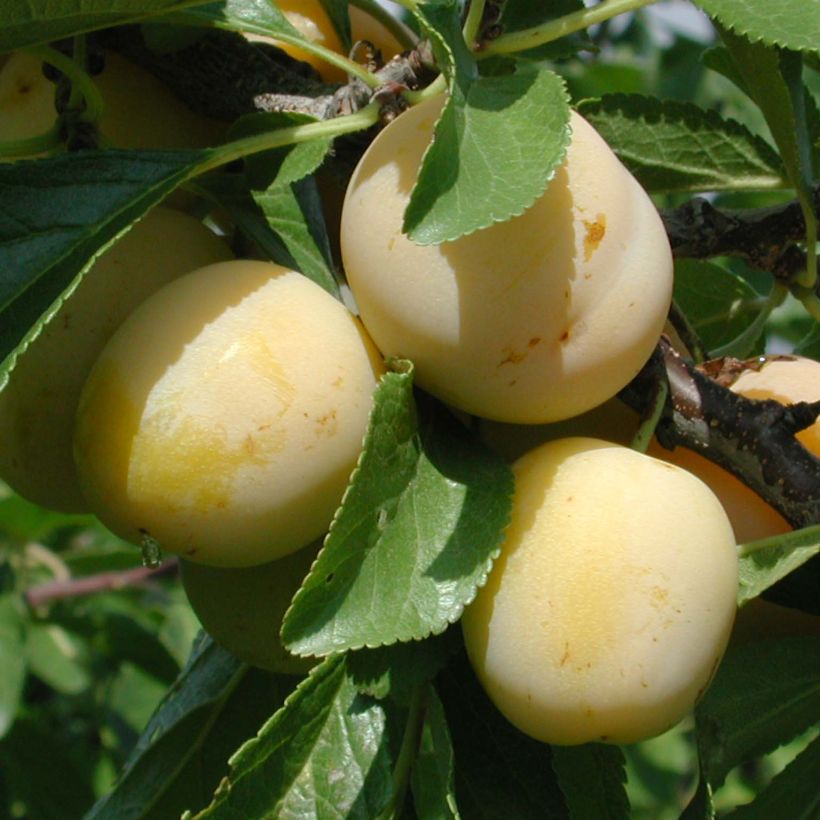

Plant habit
Fruit
Flowering
Foliage
Botanical data
Prunus
domestica
Miraclaude® 'Delclomi'
Rosaceae
European plum, Common plum, Garden plum
Eastern Europe
Myrobolan (Ready-to-plant root ball - Goblet)
Other Plum Trees
Planting and care
Easy to grow, the Plum 'Miraclaude' thrives in any type of light, rich, neutral or acidic soil, moist but not excessively humid and without limestone. Ensure proper drainage of the planting hole with a thin layer of gravel. Dig a hole two to three weeks before planting, twice as wide and deep as the pot. On the day, place the tree with its pot in a basin of water, so that the entire root ball is moistened by capillary action. Add compost to the bottom of the hole. Place the tree in the hole, fill with a mixture of soil and compost. Do not bury the graft union. Firmly tamp down at the base. The root ball should be completely covered. Water generously.
You can add a small handful of wood ash, rich in potash, during the winter to improve fruiting.
Planting period
Intended location
Care
-
, onOrder confirmed
Reply from on Promesse de fleurs
Ancient and local varieties
Haven't found what you were looking for?
Hardiness is the lowest winter temperature a plant can endure without suffering serious damage or even dying. However, hardiness is affected by location (a sheltered area, such as a patio), protection (winter cover) and soil type (hardiness is improved by well-drained soil).

Photo Sharing Terms & Conditions
In order to encourage gardeners to interact and share their experiences, Promesse de fleurs offers various media enabling content to be uploaded onto its Site - in particular via the ‘Photo sharing’ module.
The User agrees to refrain from:
- Posting any content that is illegal, prejudicial, insulting, racist, inciteful to hatred, revisionist, contrary to public decency, that infringes on privacy or on the privacy rights of third parties, in particular the publicity rights of persons and goods, intellectual property rights, or the right to privacy.
- Submitting content on behalf of a third party;
- Impersonate the identity of a third party and/or publish any personal information about a third party;
In general, the User undertakes to refrain from any unethical behaviour.
All Content (in particular text, comments, files, images, photos, videos, creative works, etc.), which may be subject to property or intellectual property rights, image or other private rights, shall remain the property of the User, subject to the limited rights granted by the terms of the licence granted by Promesse de fleurs as stated below. Users are at liberty to publish or not to publish such Content on the Site, notably via the ‘Photo Sharing’ facility, and accept that this Content shall be made public and freely accessible, notably on the Internet.
Users further acknowledge, undertake to have ,and guarantee that they hold all necessary rights and permissions to publish such material on the Site, in particular with regard to the legislation in force pertaining to any privacy, property, intellectual property, image, or contractual rights, or rights of any other nature. By publishing such Content on the Site, Users acknowledge accepting full liability as publishers of the Content within the meaning of the law, and grant Promesse de fleurs, free of charge, an inclusive, worldwide licence for the said Content for the entire duration of its publication, including all reproduction, representation, up/downloading, displaying, performing, transmission, and storage rights.
Users also grant permission for their name to be linked to the Content and accept that this link may not always be made available.
By engaging in posting material, Users consent to their Content becoming automatically accessible on the Internet, in particular on other sites and/or blogs and/or web pages of the Promesse de fleurs site, including in particular social pages and the Promesse de fleurs catalogue.
Users may secure the removal of entrusted content free of charge by issuing a simple request via our contact form.
The flowering period indicated on our website applies to countries and regions located in USDA zone 8 (France, the United Kingdom, Ireland, the Netherlands, etc.)
It will vary according to where you live:
- In zones 9 to 10 (Italy, Spain, Greece, etc.), flowering will occur about 2 to 4 weeks earlier.
- In zones 6 to 7 (Germany, Poland, Slovenia, and lower mountainous regions), flowering will be delayed by 2 to 3 weeks.
- In zone 5 (Central Europe, Scandinavia), blooming will be delayed by 3 to 5 weeks.
In temperate climates, pruning of spring-flowering shrubs (forsythia, spireas, etc.) should be done just after flowering.
Pruning of summer-flowering shrubs (Indian Lilac, Perovskia, etc.) can be done in winter or spring.
In cold regions as well as with frost-sensitive plants, avoid pruning too early when severe frosts may still occur.
The planting period indicated on our website applies to countries and regions located in USDA zone 8 (France, United Kingdom, Ireland, Netherlands).
It will vary according to where you live:
- In Mediterranean zones (Marseille, Madrid, Milan, etc.), autumn and winter are the best planting periods.
- In continental zones (Strasbourg, Munich, Vienna, etc.), delay planting by 2 to 3 weeks in spring and bring it forward by 2 to 4 weeks in autumn.
- In mountainous regions (the Alps, Pyrenees, Carpathians, etc.), it is best to plant in late spring (May-June) or late summer (August-September).
The harvesting period indicated on our website applies to countries and regions in USDA zone 8 (France, England, Ireland, the Netherlands).
In colder areas (Scandinavia, Poland, Austria...) fruit and vegetable harvests are likely to be delayed by 3-4 weeks.
In warmer areas (Italy, Spain, Greece, etc.), harvesting will probably take place earlier, depending on weather conditions.
The sowing periods indicated on our website apply to countries and regions within USDA Zone 8 (France, UK, Ireland, Netherlands).
In colder areas (Scandinavia, Poland, Austria...), delay any outdoor sowing by 3-4 weeks, or sow under glass.
In warmer climes (Italy, Spain, Greece, etc.), bring outdoor sowing forward by a few weeks.

































